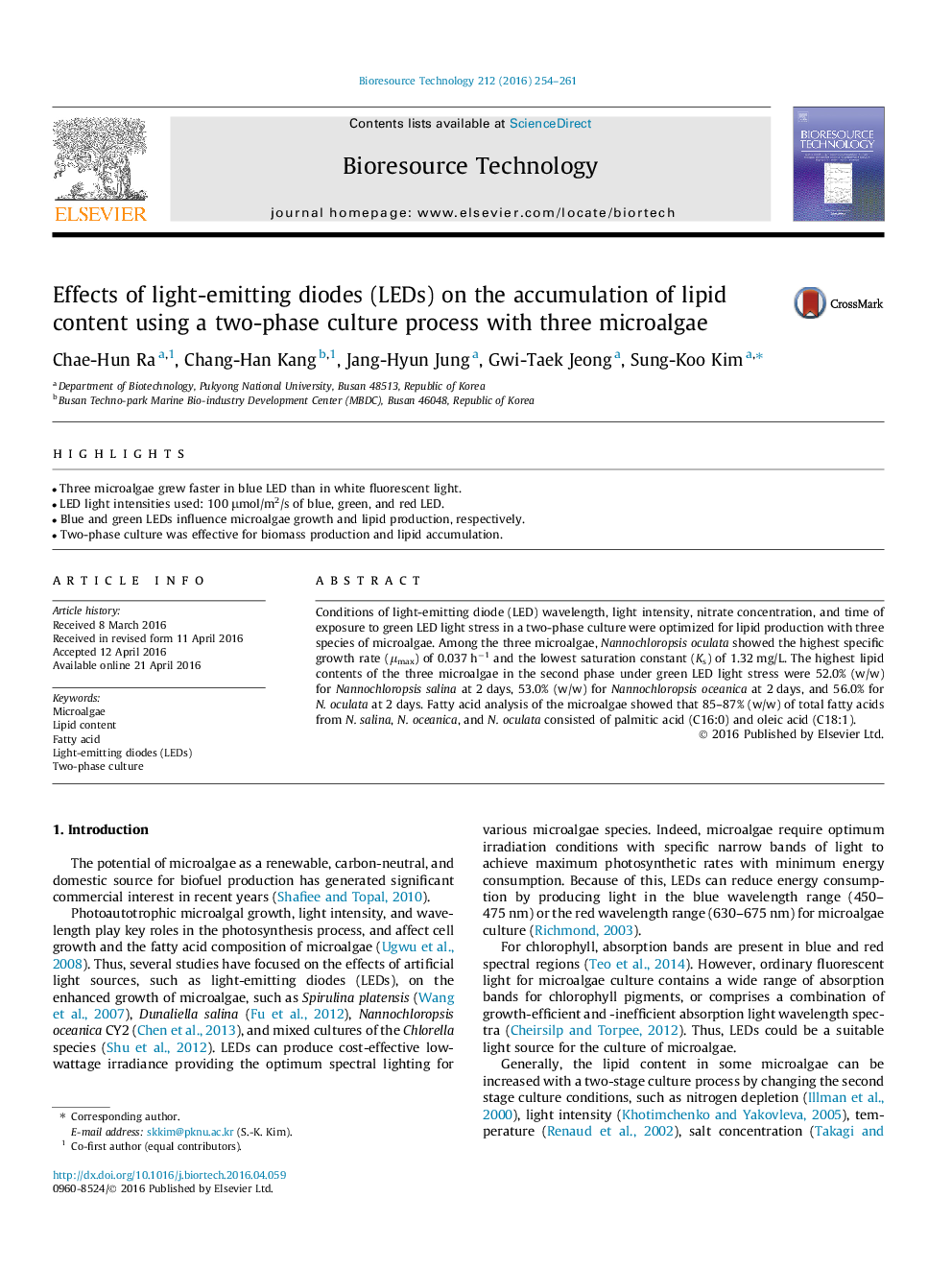| Article ID | Journal | Published Year | Pages | File Type |
|---|---|---|---|---|
| 7071386 | Bioresource Technology | 2016 | 8 Pages |
Abstract
Conditions of light-emitting diode (LED) wavelength, light intensity, nitrate concentration, and time of exposure to green LED light stress in a two-phase culture were optimized for lipid production with three species of microalgae. Among the three microalgae, Nannochloropsis oculata showed the highest specific growth rate (μmax) of 0.037 hâ1 and the lowest saturation constant (Ks) of 1.32 mg/L. The highest lipid contents of the three microalgae in the second phase under green LED light stress were 52.0% (w/w) for Nannochloropsis salina at 2 days, 53.0% (w/w) for Nannochloropsis oceanica at 2 days, and 56.0% for N. oculata at 2 days. Fatty acid analysis of the microalgae showed that 85-87% (w/w) of total fatty acids from N. salina, N. oceanica, and N. oculata consisted of palmitic acid (C16:0) and oleic acid (C18:1).
Related Topics
Physical Sciences and Engineering
Chemical Engineering
Process Chemistry and Technology
Authors
Chae-Hun Ra, Chang-Han Kang, Jang-Hyun Jung, Gwi-Taek Jeong, Sung-Koo Kim,
